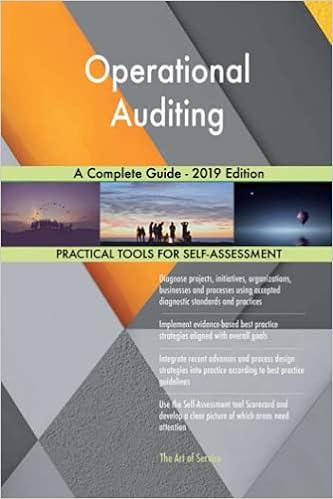Question
1. Record the entry for assets previously unrecorded. (Note: Use the general Accumulated Depreciation, Capital Assets account.) 2. During the year, expenditures for capital outlays

-
1. Record the entry for assets previously unrecorded. (Note: Use the general Accumulated Depreciation, Capital Assets account.)
-
2. During the year, expenditures for capital outlays amounted to $7,520,000. Of that amount, $4,812,900 was for buildings; the remainder was for improvements other than buildings.
-
3. The capital outlay expenditures outlined in (2) were completed at the end of the year (and will begin to be depreciated next year). For purposes of financial statement presentation, all capital assets are depreciated using the straight-line method, with no estimated salvage value. Estimated lives are as follows: buildings, 40 years; improvements other than buildings, 20 years; and equipment, 10 years. (Note: Please use the specific Accumulated Depreciation accounts and not the general Accumulated Depreciation, Capital Assets account.)
-
4. In the governmental funds Statement of Revenues, Expenditures, and Changes in Fund Balances, the City reported proceeds from the sale of land in the amount of $602,000. The land originally cost $507,000.
-
5. At the beginning of the year, general obligation bonds were outstanding in the amount of $4,021,000. Unamortized bond premium amounted to $38,000.
-
6. Record the entry for amortization of bond premium.
-
7. Record the entry for debt service expenditure towards bonds.
-
8. At year-end, additional general obligation bonds were issued in the amount of $3,588,900, at par.
Step by Step Solution
There are 3 Steps involved in it
Step: 1

Get Instant Access to Expert-Tailored Solutions
See step-by-step solutions with expert insights and AI powered tools for academic success
Step: 2

Step: 3

Ace Your Homework with AI
Get the answers you need in no time with our AI-driven, step-by-step assistance
Get Started


